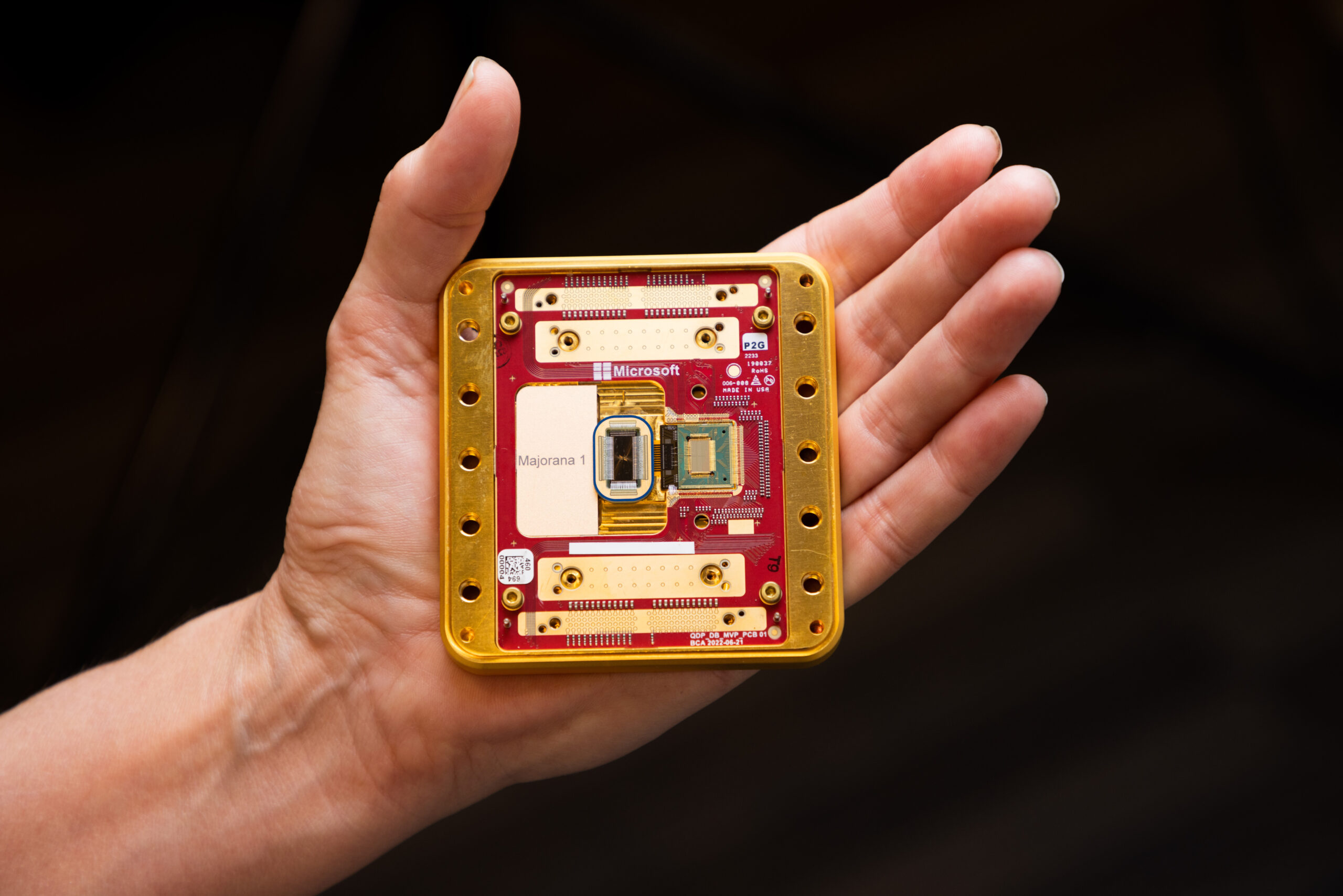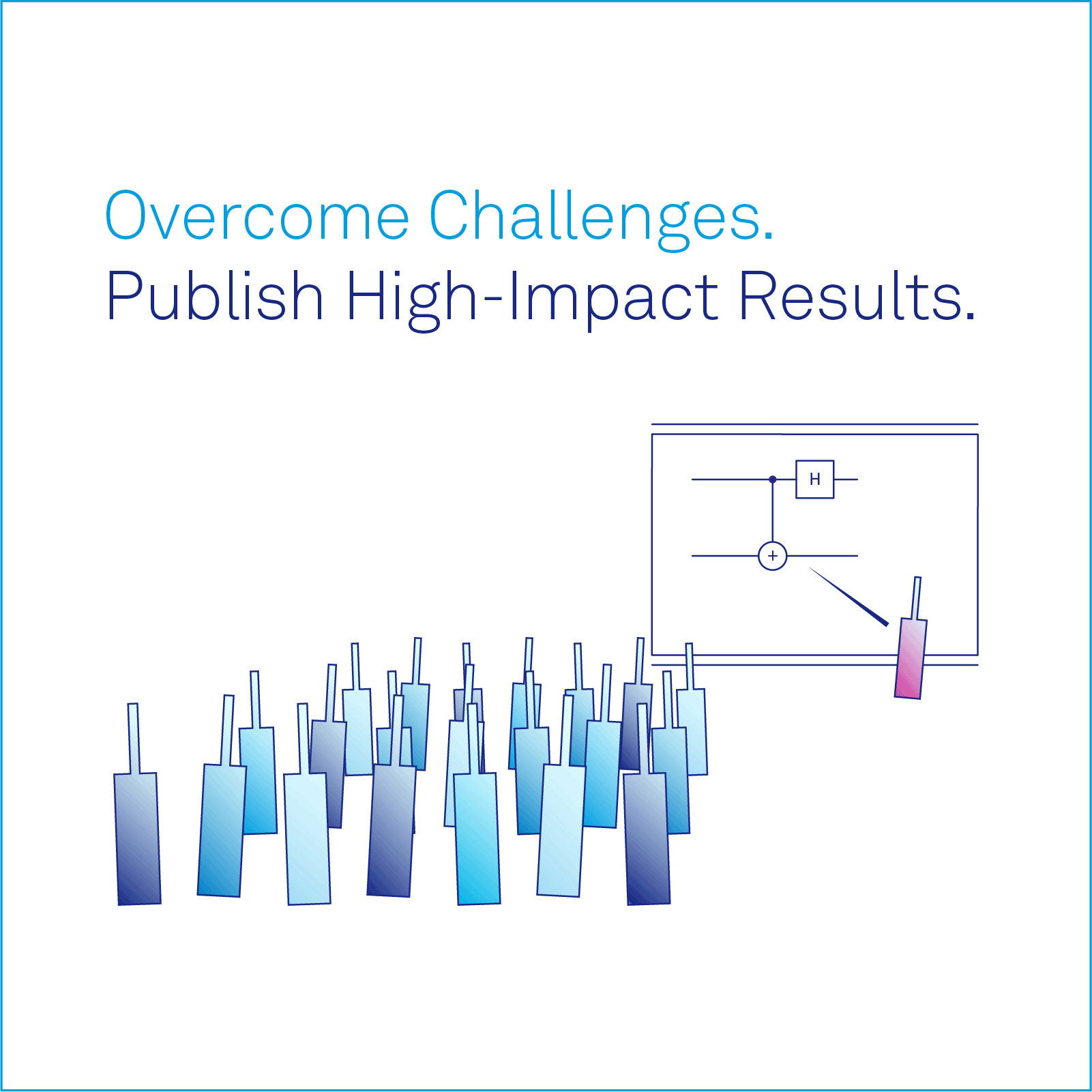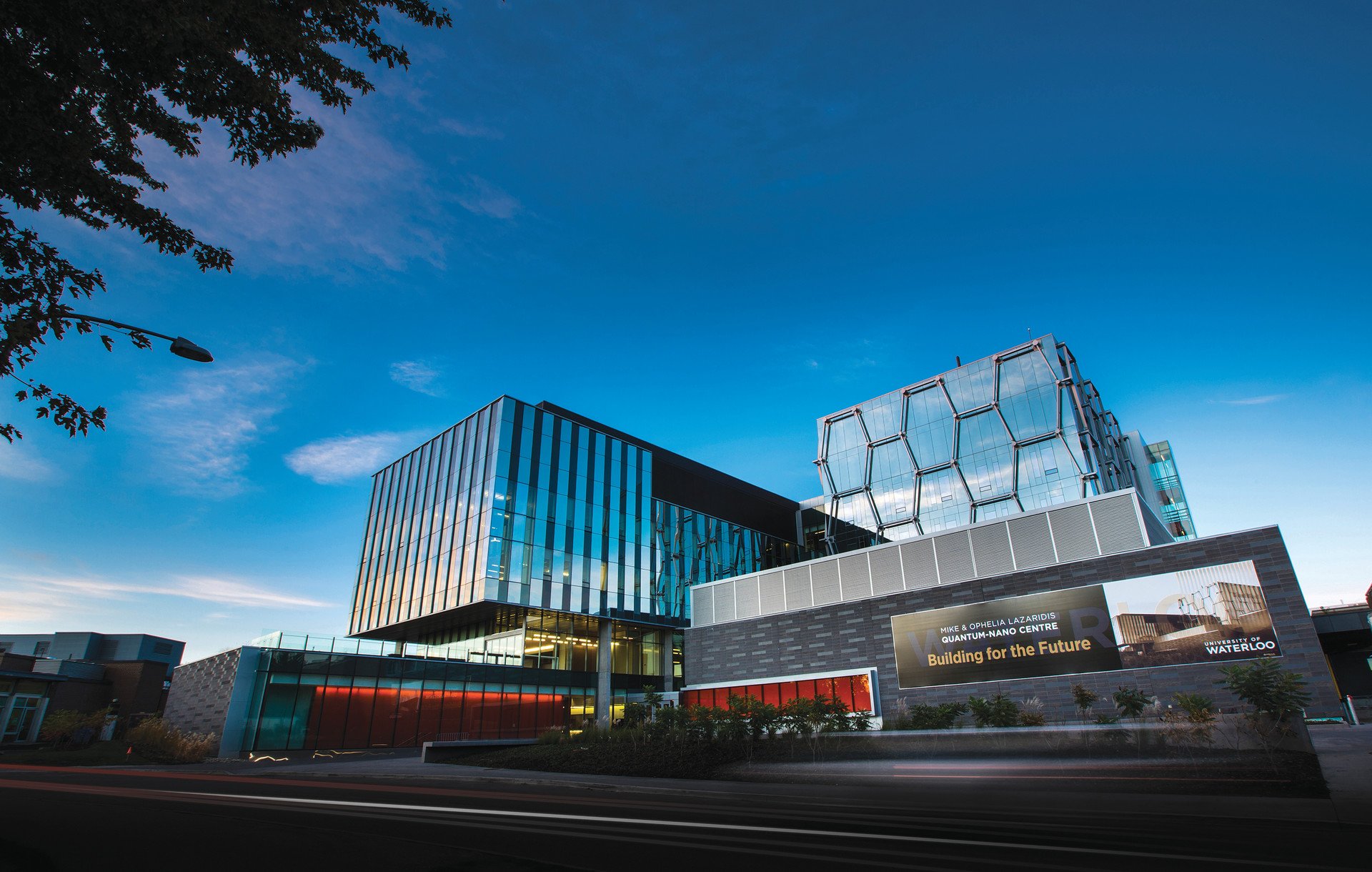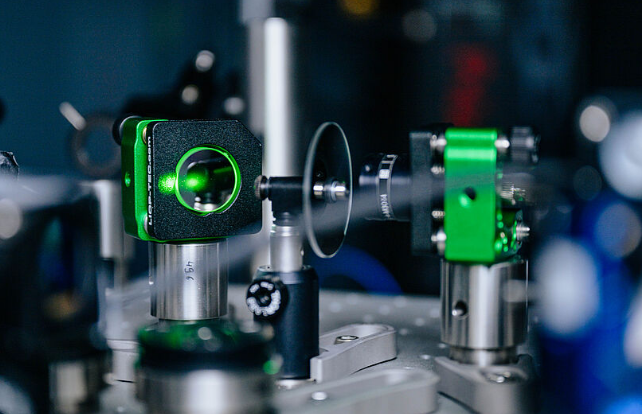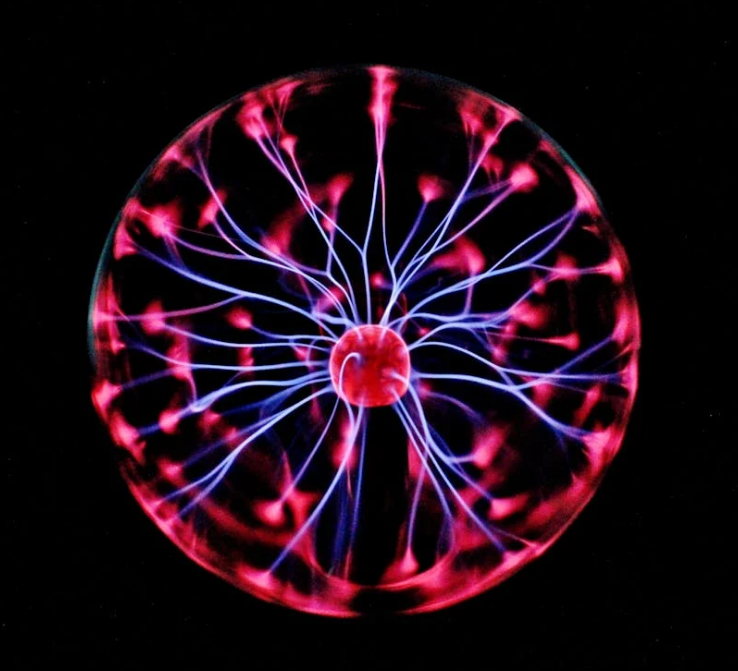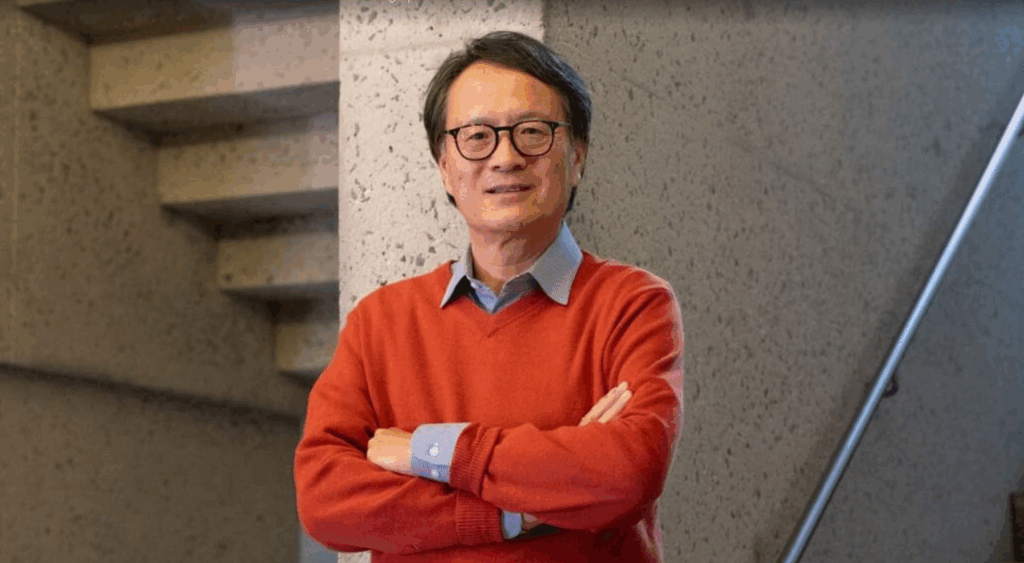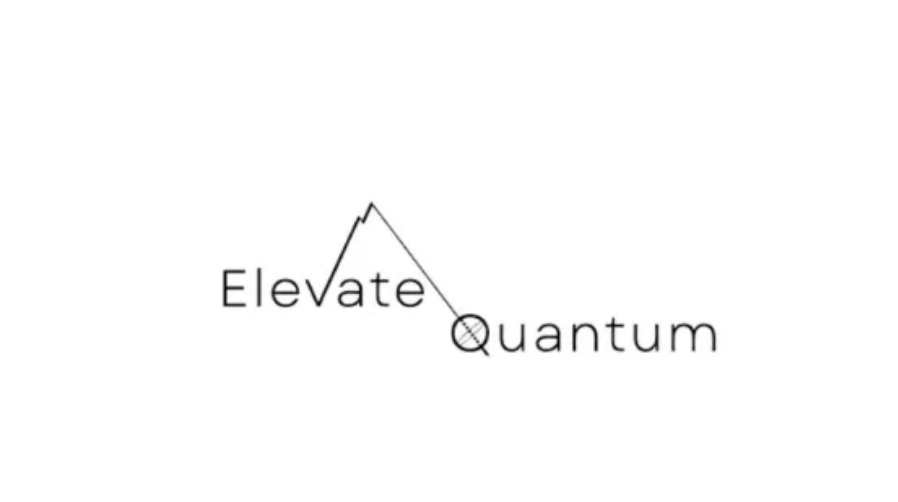By Catherine Bolgar
Microsoft today introduced Majorana 1, the world’s first quantum chip powered by a new Topological Core architecture that it expects will realize quantum computers capable of solving meaningful, industrial-scale problems in years, not decades.
It leverages the world’s first topoconductor, a breakthrough type of material that can observe and control Majorana particles to produce more reliable and scalable qubits, which are the building blocks for quantum computers.
In the same way that the invention of semiconductors made today’s smartphones, computers, and electronics possible, topoconductors and the new type of chip they enable offer a path to developing quantum systems that can scale to a million qubits and are capable of tackling the most complex industrial and societal problems, Microsoft said.

“We took a step back and said ‘Ok, let’s invent the transistor for the quantum age. What properties does it need to have?’” said Chetan Nayak, Microsoft technical fellow. “And that’s really how we got here – it’s the particular combination, the quality and the important details in our new materials stack that have enabled a new kind of qubit and ultimately our entire architecture.”
This new architecture used to develop the Majorana 1 processor offers a clear path to fit a million qubits on a single chip that can fit in the palm of one’s hand, Microsoft said. This is a needed threshold for quantum computers to deliver transformative, real-world solutions – such as breaking down microplastics into harmless byproducts or inventing self-healing materials for construction, manufacturing, or healthcare. All the world’s current computers operating together can’t do what a one-million-qubit quantum computer will be able to do.
“Whatever you’re doing in the quantum space needs to have a path to a million qubits. If it doesn’t, you’re going to hit a wall before you get to the scale at which you can solve the really important problems that motivate us,” Nayak said. “We have actually worked out a path to a million.”
The topoconductor, or topological superconductor, is a special category of material that can create an entirely new state of matter – not a solid, liquid, or gas but a topological state. This is harnessed to produce a more stable qubit that is fast, small, and can be digitally controlled, without the tradeoffs required by current alternatives.
A new paper published Wednesday in Nature outlines how Microsoft researchers were able to create the topological qubit’s exotic quantum properties and also accurately measure them, an essential step for practical computing.
This breakthrough required developing an entirely new materials stack made of indium arsenide and aluminum, much of which Microsoft designed and fabricated atom by atom. The goal was to coax new quantum particles called Majoranas into existence and take advantage of their unique properties to reach the next horizon of quantum computing, Microsoft said.
The world’s first Topological Core powering the Majorana 1 is reliable by design, incorporating error resistance at the hardware level, making it more stable.
Commercially important applications will also require trillions of operations on a million qubits, which would be prohibitive with current approaches that rely on fine-tuned analog control of each qubit. The Microsoft team’s new measurement approach enables qubits to be controlled digitally, redefining and vastly simplifying how quantum computing works.
This progress validates Microsoft’s choice years ago to pursue a topological qubit design – a high-risk, high-reward scientific and engineering challenge that is now paying off. Today, the company has placed eight topological qubits on a chip designed to scale to one million.
“From the start we wanted to make a quantum computer for commercial impact, not just thought leadership,” said Matthias Troyer, Microsoft technical fellow. “We knew we needed a new qubit. We knew we had to scale.”
That approach led the Defense Advanced Research Projects Agency (DARPA), a federal agency that invests in breakthrough technologies that are important to national security, to include Microsoft in a rigorous program to evaluate whether innovative quantum computing technologies could build commercially relevant quantum systems faster than conventionally believed possible.
Microsoft is now one of two companies invited to move to the final phase of DARPA’s Underexplored Systems for Utility-Scale Quantum Computing (US2QC) program – one of the programs that makes up DARPA’s larger Quantum Benchmarking Initiative – which aims to deliver the industry’s first utility-scale fault-tolerant quantum computer, or one whose computational value exceeds its costs.
‘It Just Gives You the Answer’
In addition to making its own quantum hardware, Microsoft has partnered with Quantinuum and Atom Computing to reach scientific and engineering breakthroughs with today’s qubits, including the announcement last year of the industry’s first reliable quantum computer.
These types of machines offer important opportunities to develop quantum skills, build hybrid applications, and drive new discoveries, particularly as AI is combined with new quantum systems that will be powered by larger numbers of reliable qubits.
Today, Azure Quantum offers a suite of integrated solutions allowing customers to leverage these leading AI, high-performance computing, and quantum platforms in Azure to advance scientific discovery.
But reaching the next horizon of quantum computing will require a quantum architecture that can provide a million qubits or more and reach trillions of fast and reliable operations. Today’s announcement puts that horizon within years, not decades, Microsoft said.
Because they can use quantum mechanics to mathematically map how nature behaves with incredible precision – from chemical reactions to molecular interactions and enzyme energies – million-qubit machines should be able to solve certain types of problems in chemistry, materials science, and other industries that are impossible for today’s classical computers to accurately calculate.
- For instance, they could help solve the difficult chemistry question of why materials suffer corrosion or cracks. This could lead to self-healing materials that repair cracks in bridges or airplane parts, shattered phone screens, or scratched car doors.
- Because there are so many types of plastics, it isn’t currently possible to find a one-size-fits-all catalyst that can break them down. Quantum computing could calculate the properties of such catalysts to break down pollutants into valuable byproducts or develop non-toxic alternatives in the first place.
- Enzymes, a kind of biological catalyst, could be harnessed more effectively in healthcare and agriculture. This could lead to breakthroughs helping to eradicate global hunger: boosting soil fertility to increase yields or promoting sustainable growth of foods in harsh climates.
Most of all, quantum computing will allow engineers, scientists, companies, and others to simply design things right the first time – which would be transformative for everything from healthcare to product development.
“Any company that makes anything could just design it perfectly the first time out. It would just give you the answer,” Troyer said. “The quantum computer teaches the AI the language of nature so the AI can just tell you the recipe for what you want to make.”

